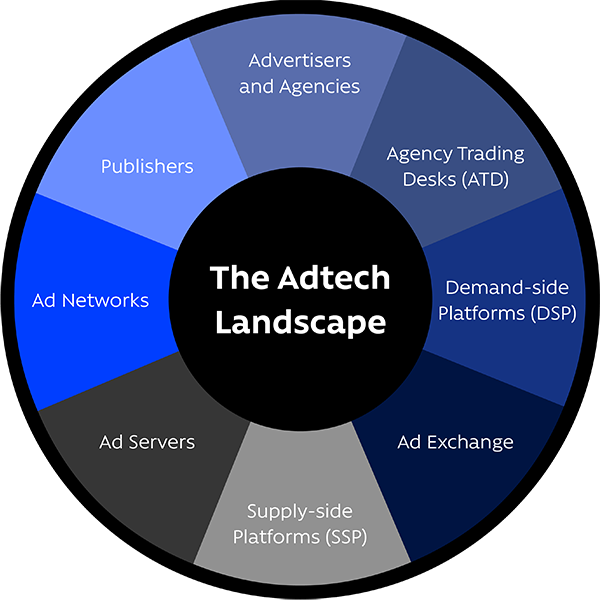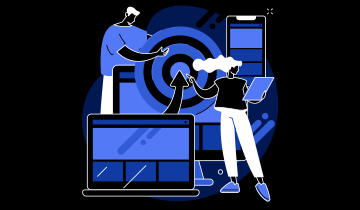What is programmatic ad buying? Why is this marketing technology so important these days?
Programmatic ad buying is the automation of the buying/selling process where buyers use a demand-side platform (DSP) and sellers use a supply-side platform (SSP) to create an automated connection.
The interaction is based on real time bidding (RTB) in a first price auction mechanic where buyers bid against over buyers on a publisher's inventory. The highest bid wins.
There are two ways of connecting buyer (advertiser) and seller (publisher, inventory owner),through a private marketplace or through the open markets. Private marketplaces have an advantage where buyer and seller can have a 1 to 1 connection, agree on pricing, access special inventory and use publisher first party data. Through the open market buyers can reach significant scale but are subject to the potential of buying fraudulent inventory.
This process is meant to be more efficient and effective than standard IO based workflow. The connections are ‘always on' which takes the RFP and IO processes out of the workflow and allows for a continuous sales process technically speaking. Buyers can leverage their first party data or use third party data programmatically which allows them to target users further down the purchase intent funnel making this far more performance based. The data used however, is based on eroding 3rd party cookies and MAIDs (Mobile Advertising ID).



What does the future hold for Programmatic?
With the decline in 3rd party cookies and MAIDs the industry is creating new ways to target users that are more privacy forward.
1 to 1 relationships have always been a part of the programmatic industry and this decline has renewed interest and investment in publisher 1st party data. Where a buyer's ability to see audiences on publisher's sites diminishes, that is where a publisher can thrive. Meaning that as 3rd party cookies fade and buyers can't find their audiences, first party cookies still work for publishers. Also, use of new technologies like clean rooms are on the rise. They allow ID matching in a privacy forward way making sure each party (marketers, publishers, platforms) is not able to see each other's data.
More scalable efforts coming out of collective working groups are taking hold as well. Universal ID projects such as The Trade Desks Unified ID 2.0 work across multiple exchanges and have the users privacy in mind. Encrypted data keeps user information in their own silos. Seller defined audiences and contextual signals can be sent via open RTB channels therefore expanding the concept of a private market deal ID to the open markets.
Aside from universal IDs there are exchange specific ID solutions such as Google's PPID or Yahoo's Connect ID which are meant to be used only on their platforms. Connect ID has the added benefit of using Yahoo data to enrich a publisher's inventory.


Why is the adoption of open source frameworks such as Prebid.org a great news for advertisers?
Proprietary wrapper efforts are fading and platforms are aligning with the original single code source that facilitates all connection points for programmatic. New platforms don't have to wait for months or years to be integrated with the top used proprietary wrappers. Their main focus is on the Prebid open source code and publishers should be moving in that direction as well.
Prebid wrapper offers more compatibility with ad tech platforms such as SSPs, DSPs and ID solutions. Open source code with the governance offered by the members of prebid.org can future proof industry efforts to update and adapt to new platforms and technologies as they emerge allowing publishers to benefit in a quickly evolving technological landscape.










